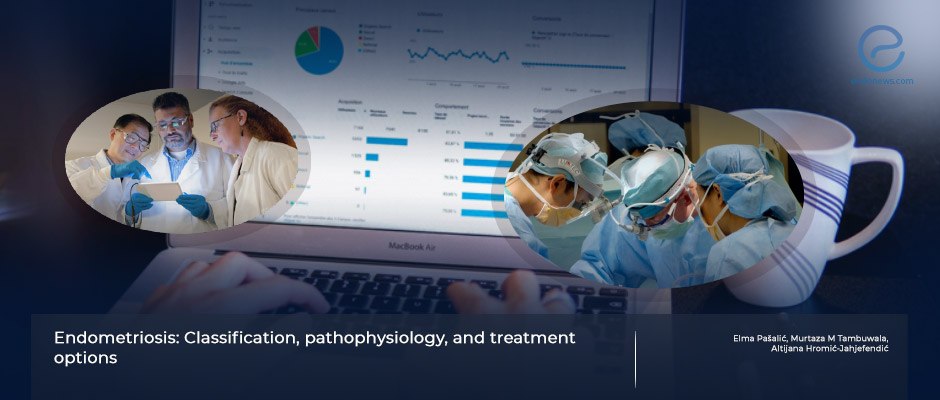Reviewing all you want to know on endometriosis !
Nov 22, 2023
Comprehensive up to date endometriosis review; both clinical and patient oriented
Key Points
Highlights:
- Among reproductive-age women with ongoing pelvic discomfort or infertility, the prevalence of endometriosis is around 35-45%.
- Even though the diagnosis of endometriosis is frequently made, the scientific basis of many aspects of this entity is still known.
Importance:
- Both physicians and patients should be aware of the current concepts and scientific basis of endometriosis in order to achieve better medical management aiming a targeted therapeutic approach for each patient.
What’s done here:
- This is a comprehensive review of updated scientific knowledge on all aspects of endometriosis that could be beneficial to both patients and healthcare providers.
- The classification, pathophysiology, the role of immunity, infertility aspects, diagnosis, and treatment were reviewed.
Key Results:
- Both diagnostic and therapeutic approaches for endometriosis include laparoscopic surgery, combined hormonal therapy, electrotherapy, acupuncture, and the use of NSAIDs.
- It is a real dilemma that diagnosis is frequently delayed significantly since the gold standard diagnostic approach is an invasive procedure, i.e. laparoscopy.
- A standard classification system for endometriotic lesions would be beneficial in introducing a common language in patients with varying disease progressions.
Lay Summary
Academicians from the International University of Sarajevo, Bosnia, and Lincoln Medical School, UK have written a comprehensive updated review on endometriosis covering many aspects of endometriosis and published their paper as an open-access manuscript in the journal “Pathology-Research and Practice”.
Endometriosis affects around 6–10% of reproductive-age women all over the world, causing debilitating pain, heavy menstrual bleeding, pain during sexual intercourse, and infertility. The etiology has not been fully revealed yet. However, it is generally accepted that the endometriotic lesions originate from viable eutopic endometrial fragments flowing back into the peritoneum via retrograde menstruation. When reproductive-age women with ongoing pelvic discomfort or infertility are taken into consideration, the prevalence of endometriosis rises to 35-45%.
Endometriosis has debilitating effects on health, academic and work performance, social and sexual life, besides mood changes. The etiopathogenesis is still not clear yet and prevents a full understanding of the pathologic pathways interfering with currently available treatments. Therapeutic remedies for treatment are laparoscopy, combined hormonal therapy, electrotherapy, acupuncture, and the use of NSAIDs. Diagnosis is often delayed since the diagnostic gold standard is an invasive procedure, i.e. laparoscopy.
A clinical dilemma is that endometriotic growths are difficult to categorize with equal respect to lesion localization, extent, and symptom presentation in the patient. Several systems for endometriosis classification are present, however, they have differing utility and applicability for specialists and patients alike. A standard unified classification for endometriotic lesions would introduce a common language for staging the clinical presentation in patients with variable progressions. This could precisely yield a standardized approach to surgical and other treatments for endometriosis besides an improved prognostic approach in assessing the pregnancies of patients recovering fertility post-treatment.
Finally, till such an endeavor is achieved, a combination of the four most frequently used scoring systems (revised American Society for Reproductive Medicine (rASRM), ENZIAN, endometriosis fertility index (EFI), and, more recently, American Association of Gynecologic Laparoscopists (AAGL), should be used for most accurate morphological interpretation and delineation.
Research Source: https://pubmed.ncbi.nlm.nih.gov/37844487/
Laparoscopy endometriosis pelvic discomfort dyspareunia retrograde menstruation endometriosis scoring

